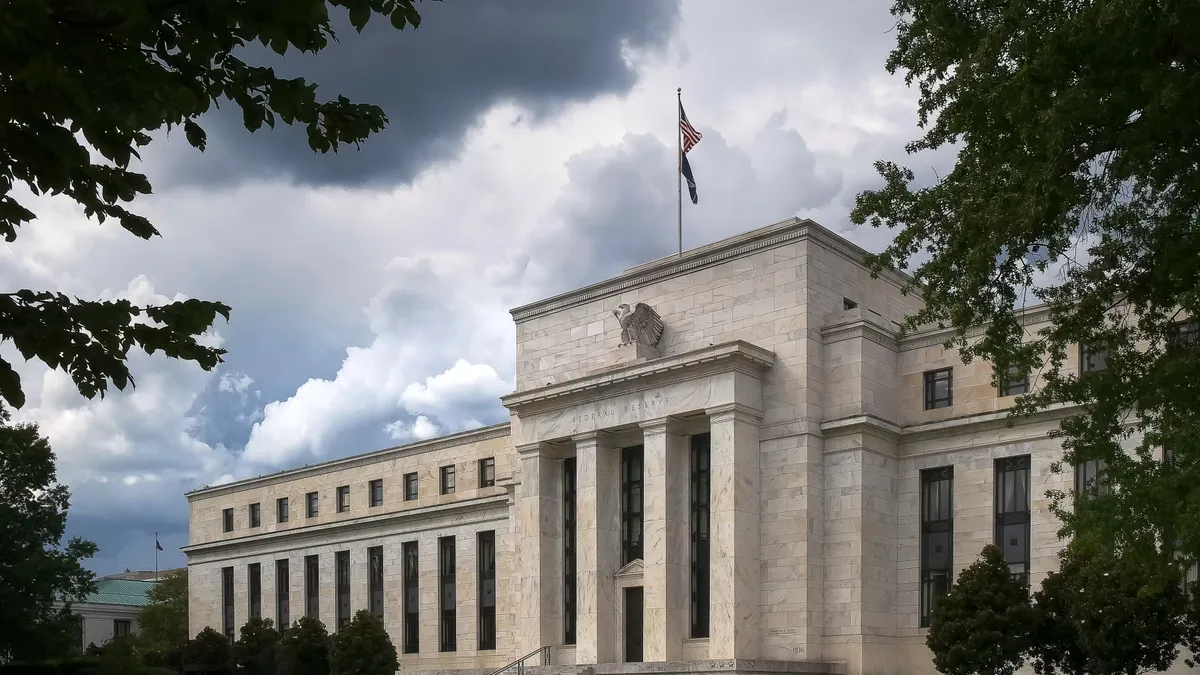Dive Brief:
- Confidence among accountants in the economic outlook for North America recovered during Q4 for the second consecutive quarter despite the most aggressive monetary tightening by the Federal Reserve in four decades, according to a survey of accountants worldwide.
- The Q4 Global Economic Conditions Survey for North America shows that expectations for capital spending and new orders improved compared with the third quarter, according to the survey by the Association of Chartered Certified Accountants and Institute of Management Accountants.
- Compared with the second quarter of 2022, the survey “results suggest that North America respondents may be less worried than they were about [the invasion of] Ukraine but the risk is that they could be underestimating the impact of the Fed’s tightening on the U.S. economy in 2023,” the ACCA and IMA said. The organizations last month surveyed 1,720 accountants.
Dive Insight:
The Fed on Tuesday begins a two-day monetary policy meeting after several central bank officials, including Chair Jerome Powell, signaled that they intend to favor further withdrawing stimulus by increasing the federal funds rate by a quarter percentage point.
With the Fed and other “central banks no longer willing to take a risk with inflation — fearful that robust price pressures could become embedded with wage costs or inflation expectations — further monetary tightening appears inevitable,” the ACCA and IMA said.
U.S. inflation has cooled in recent months, with the Fed’s preferred gauge — the core personal consumption expenditures price index — falling to 4.4% in the year through December from an annual pace of 5.2% in September, according to the Labor Department.
Yet with inflation more than twice the Fed’s 2% target, several policymakers have said they want to continue withdrawing accommodation until they achieve a steady decline in price pressures, even at costs to employment and business performance.
“Bringing inflation down is likely to require a period of below-trend growth and some softening of labor market conditions,” New York Fed President John Williams said in a Jan. 19 speech. “But restoring price stability is essential to achieving maximum employment and stable prices over the longer term, and it is critical that we stay the course until the job is done.”
The U.S. economy already shows signs of slowing. Gross domestic product during last quarter grew at a 2.9% annual rate compared with a 3.2% year-over-year pace during the third quarter. Recent data show that 2022 ended with an ebbing in consumer spending, manufacturing and labor demand.
For the full-year 2022, GDP grew 2.1% compared with 5.9% in 2021.
“While the economy begins 2023 on a firm footing, inventory buildup and temporary boosts from trade and government spending in Q4 belied a clear and continued deceleration of the domestic economy that we expect to persist throughout the year as firms and households digest rate hikes” by the Fed, Moody’s Investors Service said Monday.
Accountants worldwide reported a slight decline in new orders on employment during the fourth quarter, and a modest increase in capital expenditure, the ACCA and IMA said.
Survey data “are consistent with a subdued macro-economic outlook as we head into 2023,” the ACCA and IMA said. “But the good news is that they do not appear to be at levels consistent with an outright global recession” this year.












